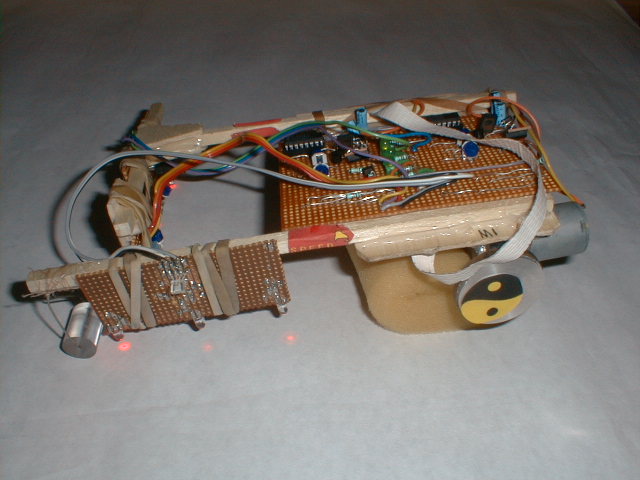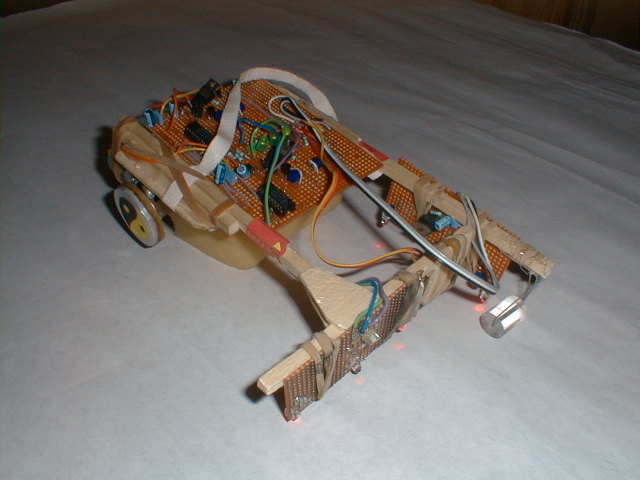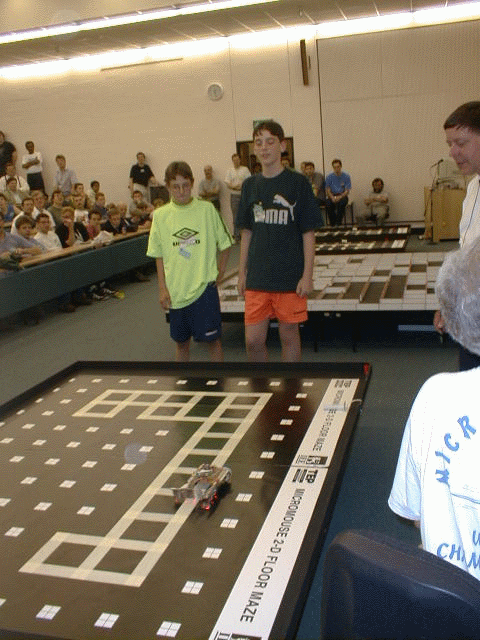|
|
Creag Louttit and Stephen Eakins' S.P.E.E.D. Super Powerful Extremely Erratic Device is derived from DASH FREE technology. It uses the standard drive train components but the two halves have been sawn apart to give a wider track and the wheels have been replaced with larger home-brew aluminium items with elastic bands glued on as tyres. This gives higher gearing and greater grip.
This view shows SPEED on a piece of foam rubber to keep the wheels off the ground so that it keeps still! SPEED has three sensors. The inner and outer ones achieve area coverage by having 3 LEDs driven from the same sensor. The outer one has its area extended along the length of SPEED to give greater braking time on a left-hand corner. The inner sensor is extended across the width of SPEED to give greater recovery time after a right-hand corner.
Both motors are fitted with power FETs so that they can be shorted-out to give improved braking.
SPEED's three sensors feed into the select inputs of an 8 to 1 multiplexer. The common line is fed into a similar motor drive circuit to DASH FREE. The 8 inputs (some of them linked together) are fed from trimmers to set the motor speeds in a similar way to DASH FREE.
So, all SPEED does is drive the motors at fixed speeds with the actual speeds determined by the combination of the 3 sensor inputs. It is not a "smart" mouse, there is no need for a microprocessor to get this level of performance.
Possible design tips for other mouse builders include the use of balsa wood to minimise weight, the use of elastic bands so that the sensors can be slid back and forwards to find the optimum position and the uses of a fixed roller for the third support. The theory of this is that it has minimum drag when the mouse is running straight but acts as a friction damper for turning movements.
SPEED uses only 4 AAA NiCd batteries for power. The combination of low weight and low internal resistance works well. With alkaline batteries fitted the performance is less good despite the higher open-circuit voltage.
SPEED won the 1998 open class super-standard competition with the fastest time of the day. It even beat a super-sophisticated processor-based machine with lots of sensors!
This shows Steve and Creag running SPEED at Manchester. It also gives a good view of the course that SPEED had to run.
SPEED is supported by Swallow Systems. We use the experience from this design to develop improvements to our DASH FREE materials and kits.
 HOME PAGE
HOME PAGE PIXIE
PIXIE DASH FREE
DASH FREE

